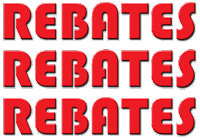The New Salesman
 |
| The mix of good habits and even better planning will be rewarded! |
Contrary to
popular belief, good salespeople don’t grow on trees. Nor can you drive by the local mission and
pick the one with the best lettered “will work for food” sign. Lastly, I want to drive a stake through the
heart of that hundred year old myth, that certain parents beget “natural born
sales wizards”. On the contrary, good
salespeople are created, molded, shaped, formed and trained. Not so good salespeople can develop bad
habits, learn the wrong kinds of behaviors and morph into non-performing drains
on their employers.
Unfortunately,
our industry has a habit of tossing new guys the car keys, pointing to the
territory and saying “go get ‘em, kid,” than providing any kind of real
training. This was an issue back in our
dad’s day, a mistake in our day and a gargantuan mistake today. Here’s why.
According to the research conducted by Matthew Dixon and Brent Adamson
in their book The Challenger Sale, the difference in results of average and top
rank salespeople is growing. In the old
days of purely transactional selling (Hey Mister, want to buy a Programmable
Controller?) the difference between the star seller and the average guy was
59%. In our world, the world of
knowledge-based solution selling, the difference between star and average is
over 200%.
The kind of slow
progress toward the top that comes from trial and error learning impedes
profits. Think about this. Most new sellers start off just a shade below
average in performance. Once they get to
average, their performance is still 200% less than a top performer. And, if we can get them to a point of
statistically half way between average and star status, they are 100% more
effective than the average guy.
Now I know what
a lot of you are thinking, we hire engineers, technicians, classically trained
professionals. In a world of
knowledge-based selling this is all good, but it still doesn’t equate to sales
moxie. What’s worse, since most of the
leaders of this industry grew up in the age of zero training, many of us don’t
really know what a good training program looks like.
I believe the
first several six months sets the stage for success by laying down a number of
good habits which morph into a foundation for growth. Yet very few distributors invest time into
establishing a plan for ramping up the new person. Instead they stand back and watch, after a
few months they may realize there’s a problem.
After a couple of informal talks with an already frustrated new
salesperson, they finally decide to enroll the guy down at the local Dale
Carnegie franchise. Everyone struggles,
money is lost and eventually the salesperson in question either figures thing
out, or is flushed as a hiring error.
Finally, here is a thought from another industry expert: In The Little Black Book of Strategic Planning for Distributors, Brent Grover estimates the cost of getting a new distributor salesperson to the point of being a profit generator at more than $150,000. But, he says, “if distributors capitalized these costs as one would a piece of production equipment – instead of writing if off as a current expense – that would be an asset on the balance sheet of at least $150,000 per salesperson.” The sooner you can get your new guy up to speed – the better. I know companies where this number is far greater.
Now a few weasel
words from yours truly. All of this is
dependent on you making a sound hiring decision and hiring errors do
happen. Further, it depends on you
having a reasonable sales process, good supply partners and the finances to
drive the training home.
With all of this
in mind, join us as we spend the next few weeks exploring the ins and outs of a
good “on boarding” process.
Distributor Planning Made Easy. Check out our Distributors Annual Planning Workbook:
http://amzn.com/1481196448


Comments